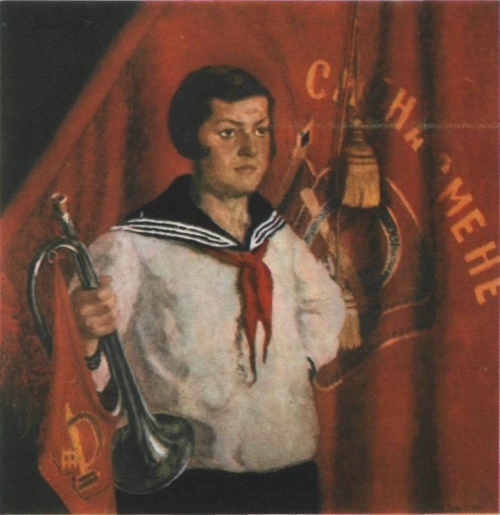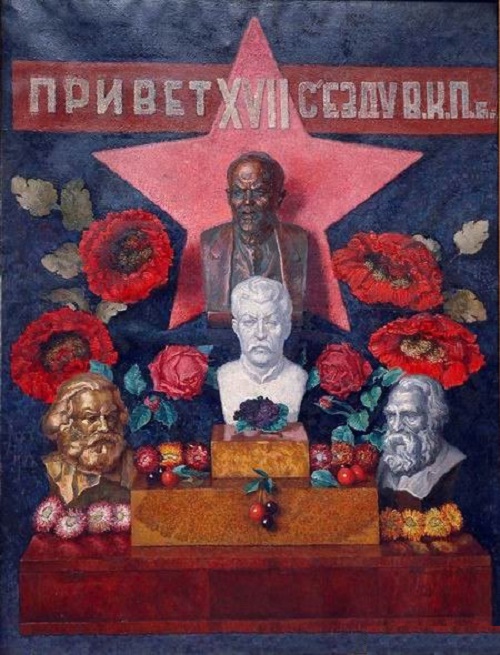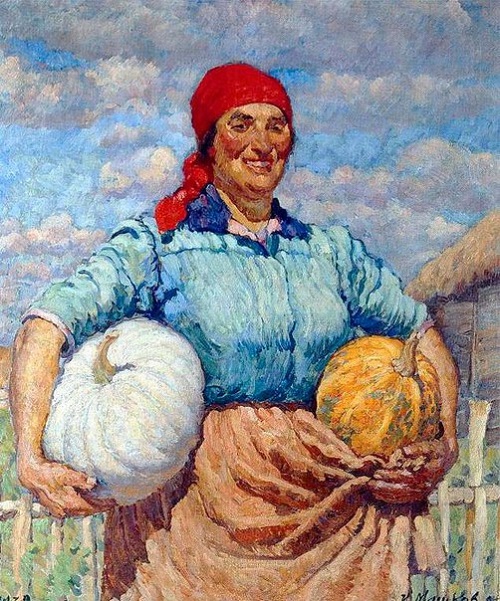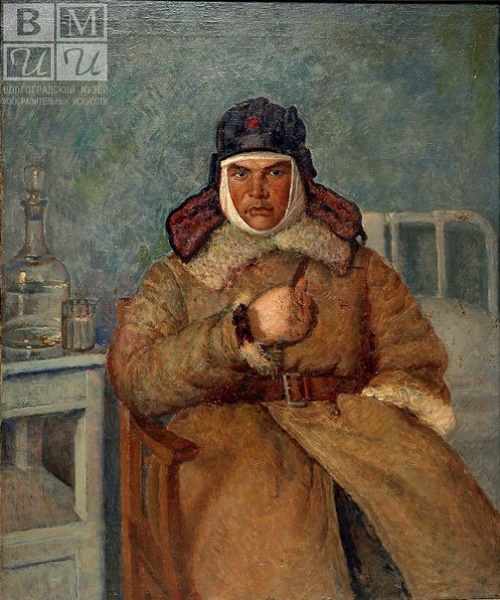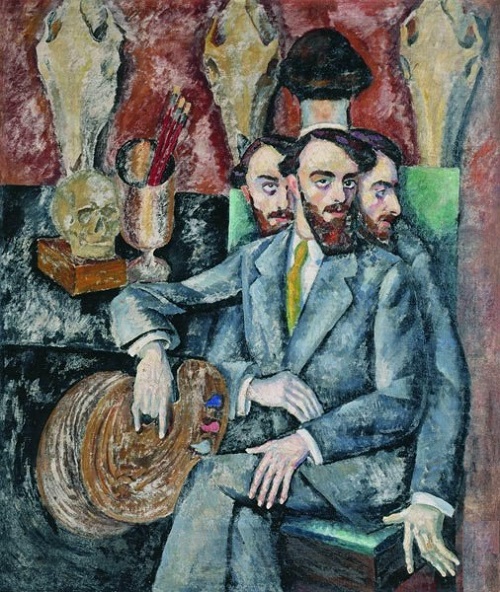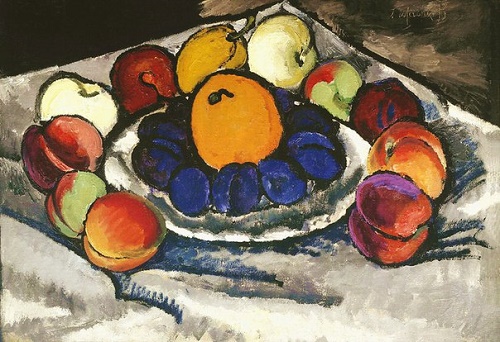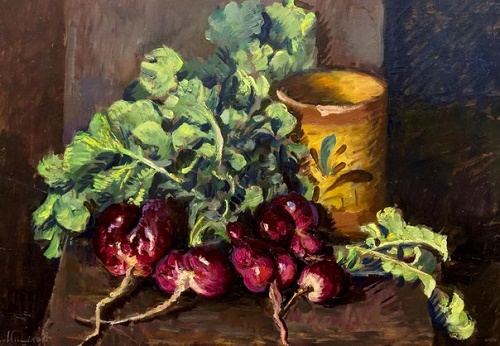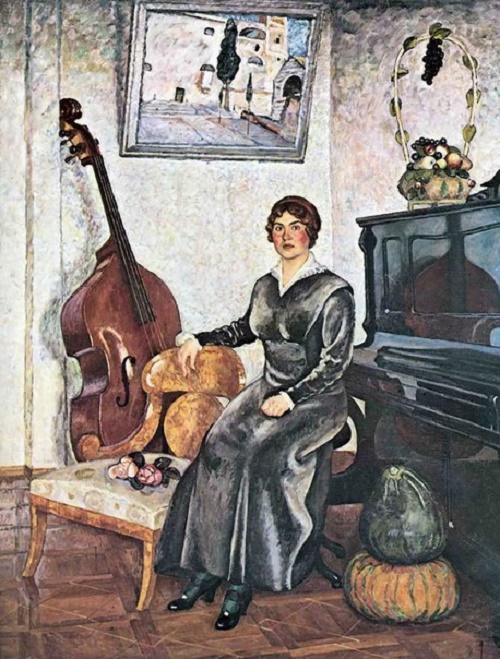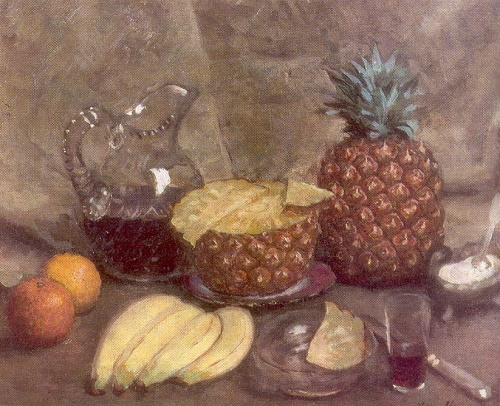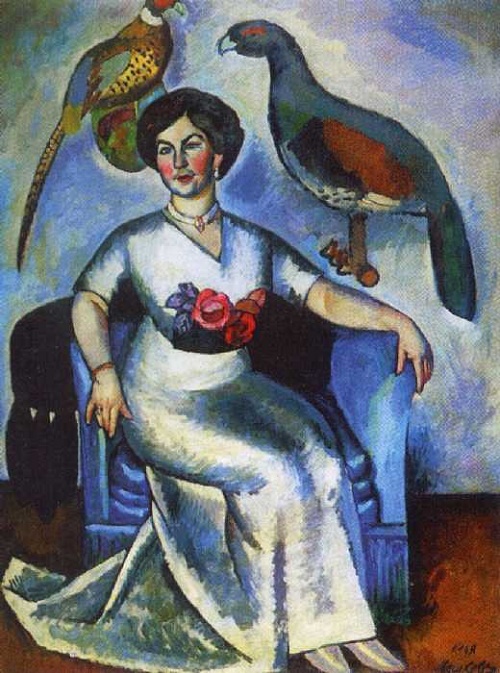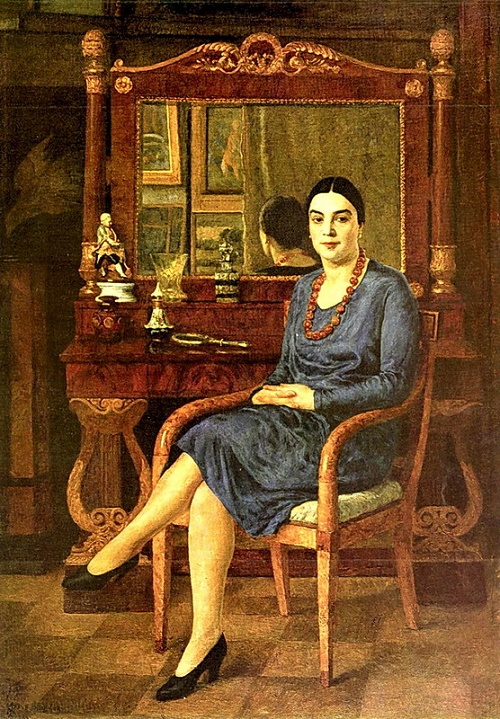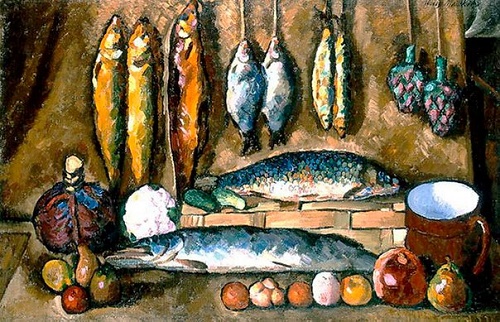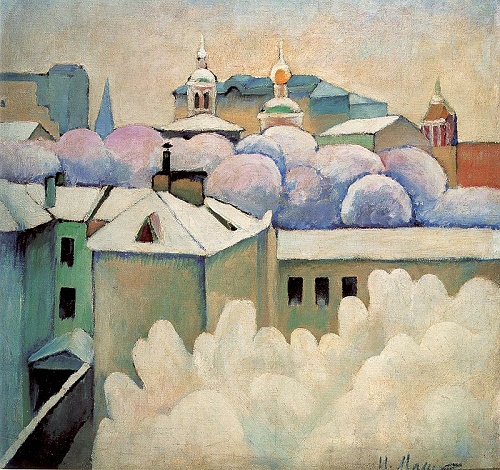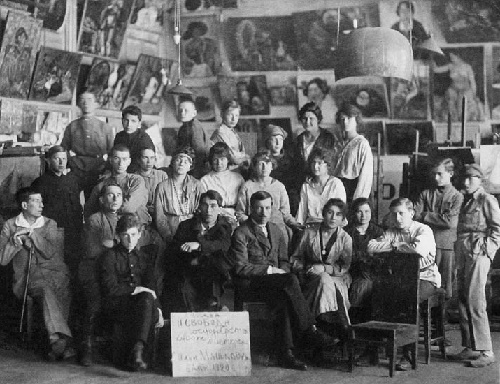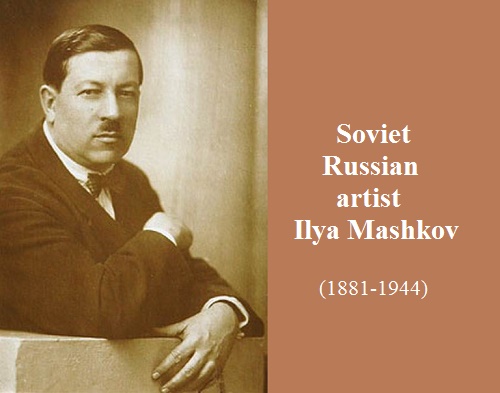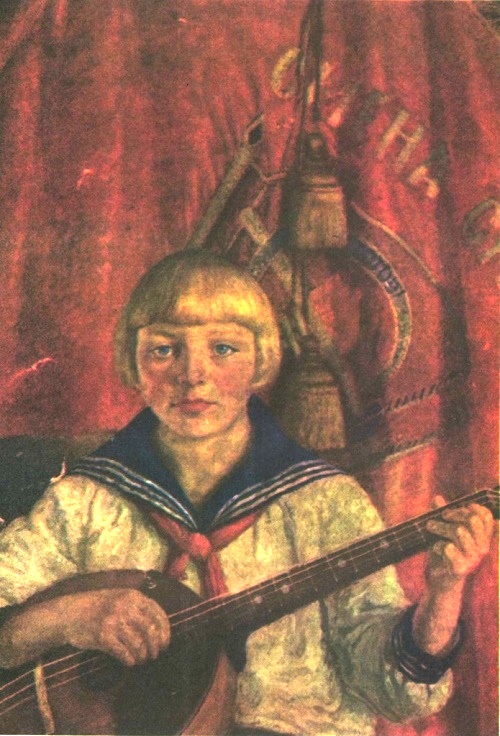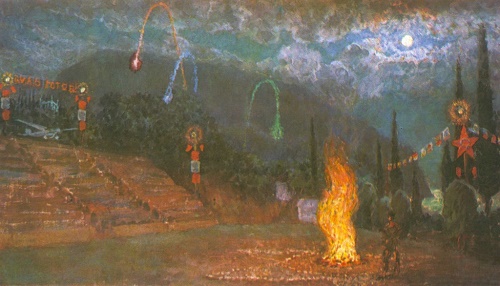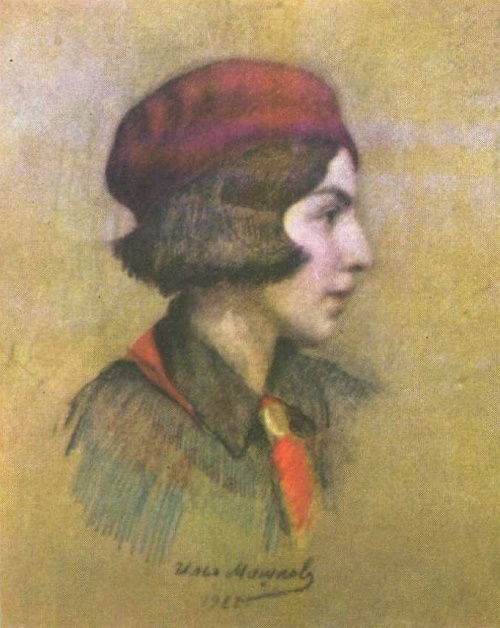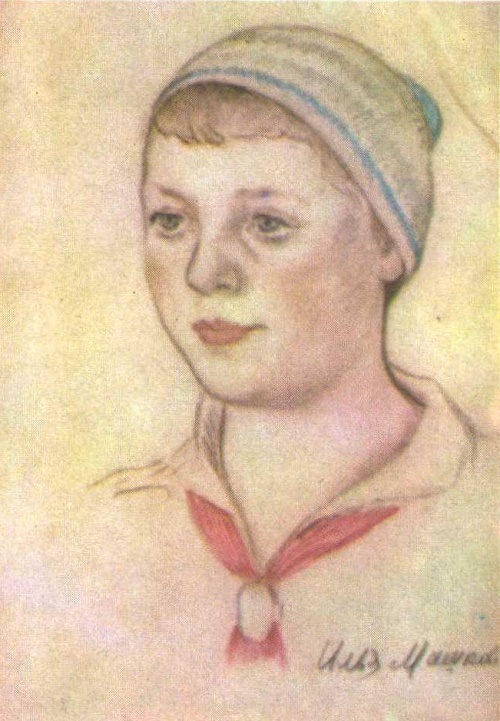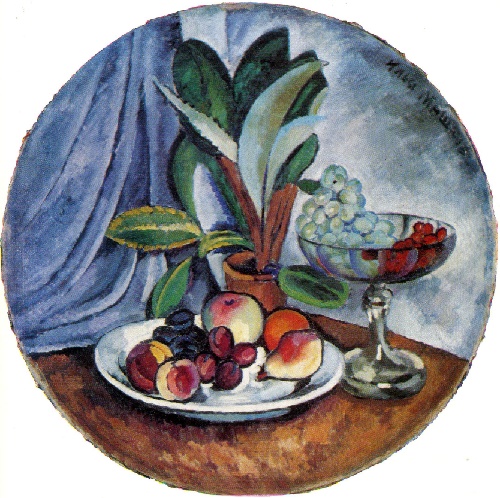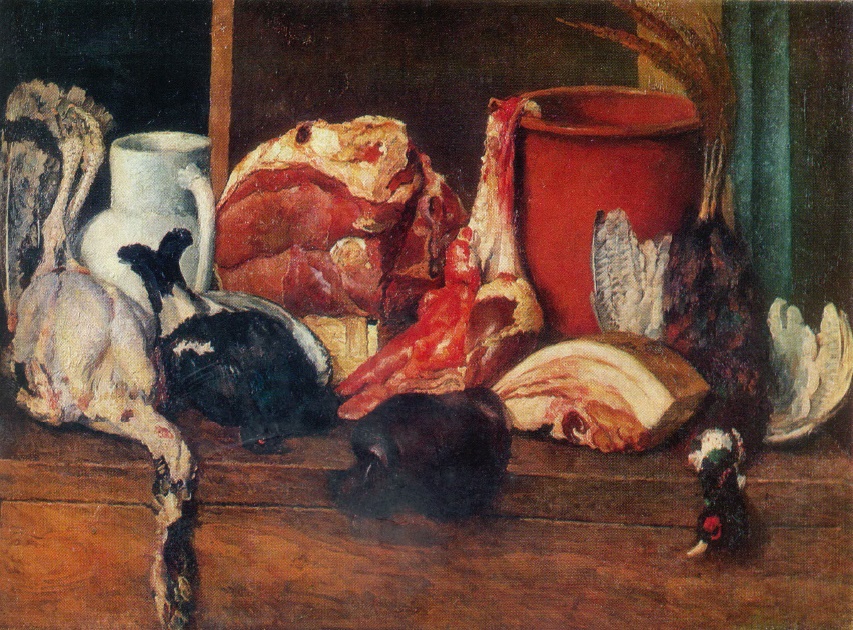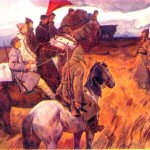Soviet painter Ilya Mashkov
Student of Valentin Serov and Konstantin Korovin, a wonderful Soviet painter Ilya Mashkov (1881-1944) loved the Crimea, repeatedly worked in Gurzuf and in each trip visited the most popular in the USSR pioneer camp Artek. Communication with the pioneers, the lives of children, full of the romance of socialist transformation, provided the basis for the creation of the portrait in 1933, the “Pioneer with the horn.” Soviet artist, co-founder and member of the artistic association “Jack of Diamonds” (1910) and the Society of Moscow Artists (1927-1929), was a member of the “World of Art” (1916) and the Society “Moscow painters” (1925), in the period 1924-1928 member of the Association of artists of Revolutionary Russia, Honored Artist of the RSFSR (1928).
After the Revolution he created “revolutionary painting” and worshiped workers and peasants. Unchanged remains the same at all times “healthy love for bright flesh and blood of things.”
Exhibited at the first exhibition of “Jack of Diamonds” (1910), a huge canvas of I. Mashkov “Self-portrait and a portrait of Pyotr Konchalovsky” stunned many. The half-naked figures of playing music athletes with roughly painted bodies and spherical biceps looked shocking for the Russian public. The painting was conceived as a manifesto of the new approach, proposed by the new exhibition community.
Scandalous glory accompanied young Mashkov – adventurous nugget, gaining life experience from life – working in the shops of merchants, gaining knowledge in European museums, but expelled in 1909 from the walls of the Moscow University of Painting, Sculpture and Architecture. However, Mashkov with great success taught himself – his studio (1904-1917; in 1925 converted into the Central AKhRR studio) was the most expensive and also the most visited in Moscow. Graduates of the studio were more than three thousand people, including such prominent Soviet artists as Robert Falk, Vladimir Tatlin, Alexandr Osmerkin, Vera Mukhina, Pavel Sokolov-Scalia, Vera Rokhlina.
And it was in his studio in the summer of 1910 Mashkov held an organizational meeting of artists of “The Jack of Diamonds.” “Jacks” alleged materiality of the world and a “low” subject. In an effort to bring the art “down to earth” artists of this group focused on the “craft” – a street sign, a tray, a splint. For Mashkov the craft was a native from childhood, and primitivism of his still lifes and portraits – the most simple and genuine (“Berries on a red tray”, “Still life with a Pineapple”, both in 1908; “Portrait of a Boy in a painted shirt”, 1909; “Self-Portrait”, “Portrait of a lady with pheasants,” both in 1911, and others.).
1917 was a turning point for the “Jack of Diamonds.” Part of the “jacks” emigrated, and others have found kinship in the Bolshevik ideas. Mashkov stayed in the Soviet Russia. In search of new subjects in the 1920s and 1930s, he makes a trip to the Crimea, the Caucasus, paints cheerful scene of resting working people (“the peasant resort Livadia,” 1925), the views of Artek (“Artek” 1934). During these years, the artist creates a gallery of graphic portraits of his contemporaries: workers, farmers, community leaders, pioneers.
His career Ilya Mashkov completed on the line of duty: in 1942-1943 he painted the portraits of war veterans and hospital officials in the First Moscow communist Hospital in Lefortovo and evacuation hospital №290.
Today, the works of Ilya Mashkov are in major museums around the country, exhibited abroad. One of the best collections of Mashkov has Volgograd Museum of Fine Arts. Paintings and graphics collection reflects all the stages of the creative evolution of the artist.
Soviet painter Ilya Mashkov
sources:
scanned from Soviet magazines and illustrated albums
website www.maslovka.org
